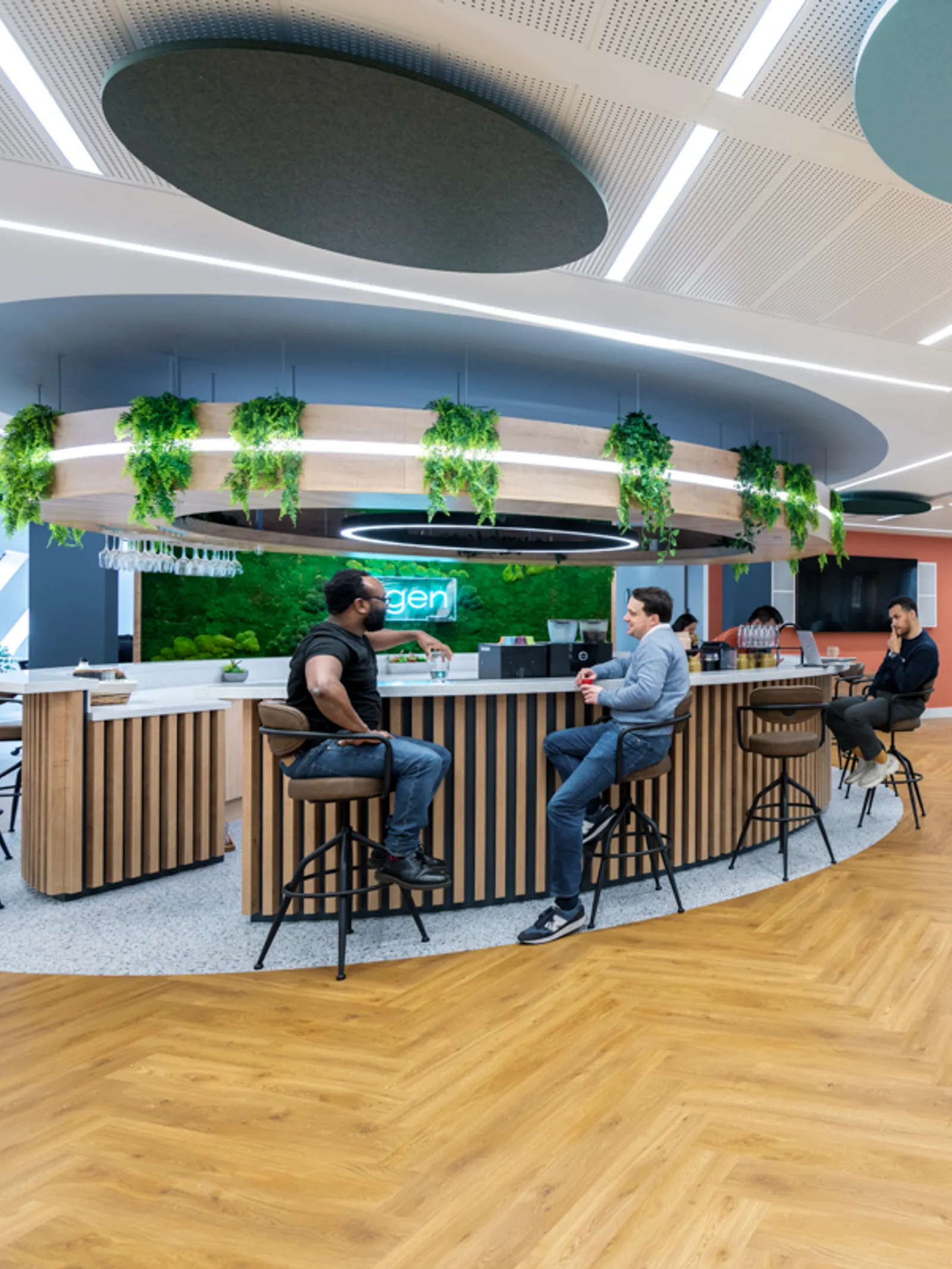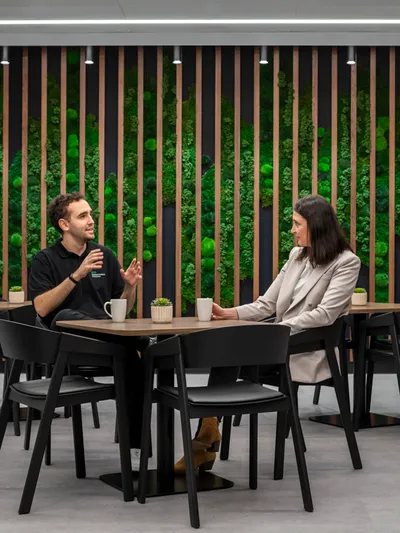This year, Area celebrates 25 years at the forefront of workplace design. To mark the milestone, we’re looking beyond our own quarter-century to chart a full one hundred years of office evolution, from the post-war 1950s to the imagined workplaces of 2050.
In that time, the office has morphed from rigid hierarchies and typewriter clatter to hybrid hubs and AI-responsive environments. It’s a story of shifting culture, technology and design, one that mirrors how society itself has changed, and offers clues to how we’ll work in decades to come.
1950s–1970s: Suits, Smoke, and Status
Post-war Britain was rebuilt with a sense of order and hierarchy. Offices were formal, with rows of identical desks and a corner office reserved for those running the show. Ashtrays were as standard as typewriters and instead of laptops and mobiles, every desk held a rotary phone, a tin of paper clips and a Rolodex.
Even as the Swinging Sixties brought cultural upheaval with The Beatles, Mary Quant, and the first moon landing, workplaces remained conservative. Comfort and wellbeing were an afterthought; control and efficiency defined the design brief.
Think rows of heavy oak or metal desks, leather-topped in senior offices. Venetian blinds filtered the light, while filing cabinets lined the walls and nicotine stains darkened the ceilings. Meeting rooms were wood-panelled, with framed company crests and a faint haze of cigarette smoke.
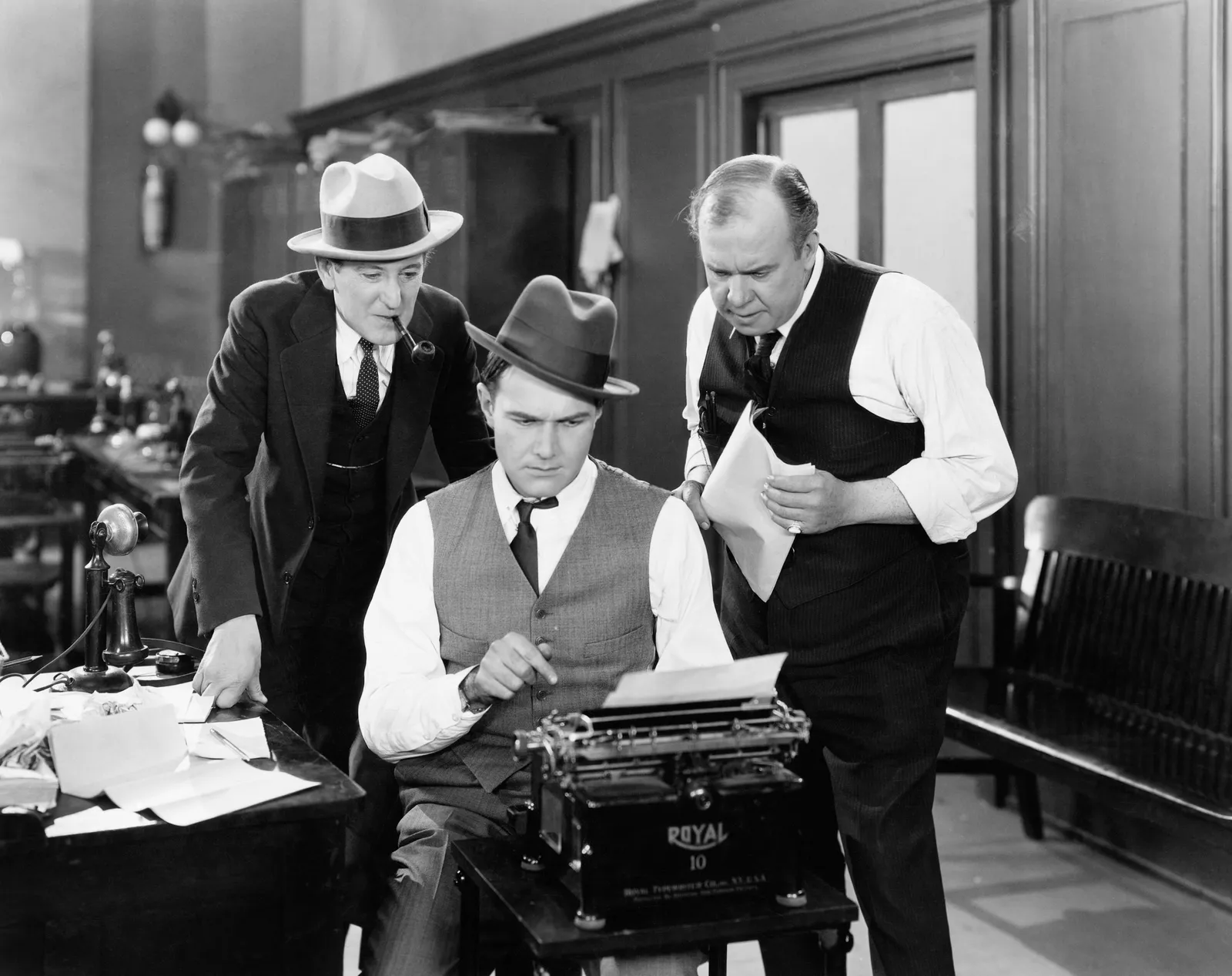
1980s: Yuppies, Power Dressing, and Cubicle Farms
Thatcher’s Britain and the 1986 Big Bang in the City of London ushered in an age of ambition. Shoulder pads and power suits became visual shorthand for success.
Bulky computers and early word processors crept onto desks. Mobile phones, still the size of bricks, hinted at a more connected future. Pop culture shaped a decade when private offices and cubicles symbolised status and privacy.
Corporate interiors turned glossy and ostentatious: smoked-glass partitions, chrome trim and bold geometric carpets. Executive suites boasted mahogany desks and leather swivel chairs, while cubicle farms filled the open floors with dividers and strip lighting. Early PCs and fax machines occupied pride of place, their whirring a new office soundtrack.
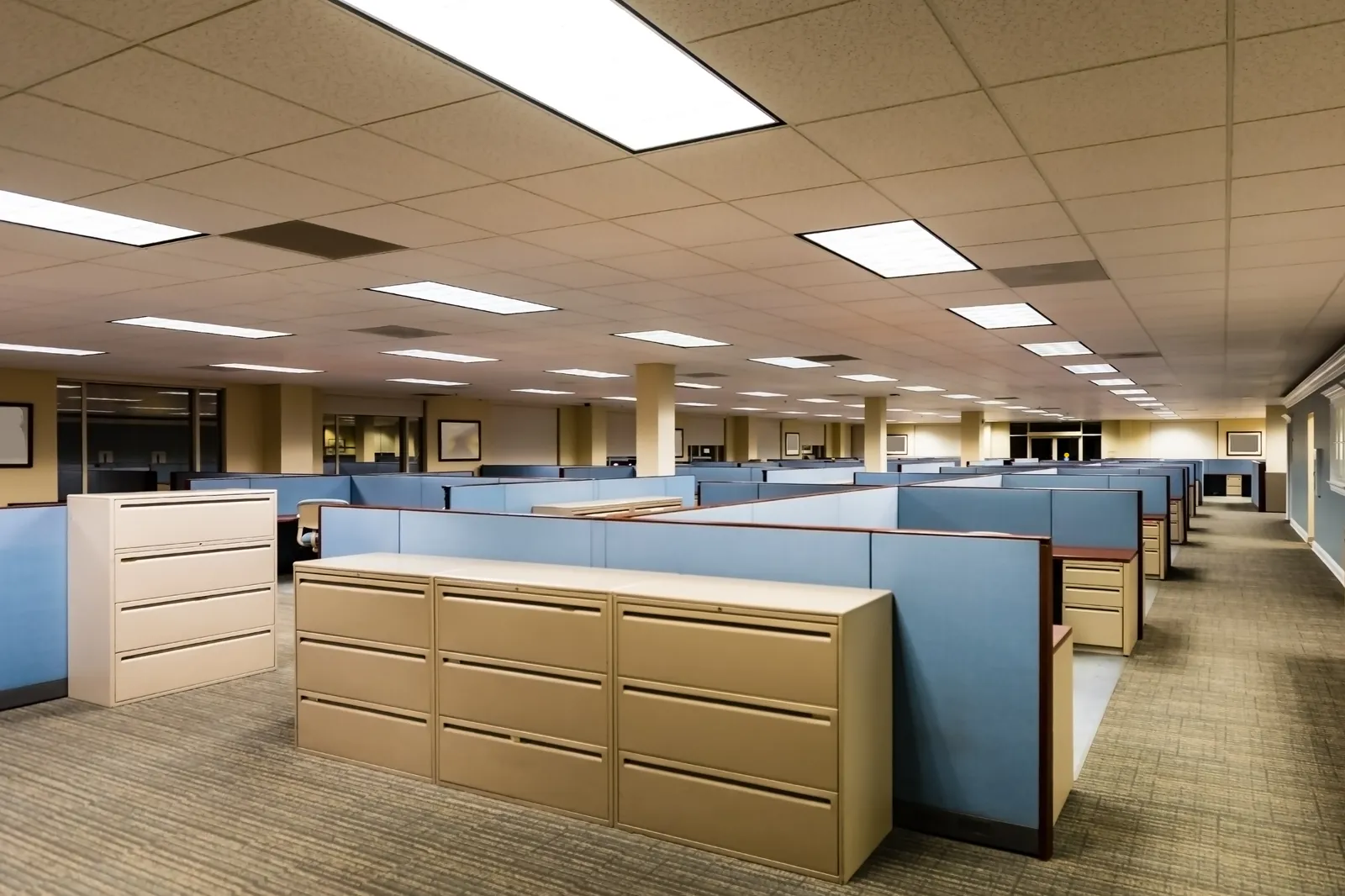
1990s: Britpop, Email, and the Dawn of Open Plan
The 1990s ushered in a more relaxed, confident Britain.
At work, email began to replace memos, and the first laptops appeared. Cubicle walls started to come down as open-plan offices gained momentum. Accessibility legislation reshaped inclusion in design.
It was in this climate, at the end of 1999, that our founders came together with a shared ambition: to create workplaces that inspire and deliver real impact for the people who use them. The following year, in 2000, that vision became reality with the launch of Area, helping organisations adapt to the first wave of true digital disruption.
Design softened slightly, although the formality of the workplace remained popular, with sharp business suits still very much the workplace uniform of the day. Grey modular workstations and low dividers replaced the tall cubicles. Cable management for PCs and chunky monitors dictated layouts. Break rooms grew brighter, with Ikea-style beech tables and the first proper coffee stations. Reception areas flirted with primary-colour logos and neon accents, echoing the optimism of Cool Britannia.
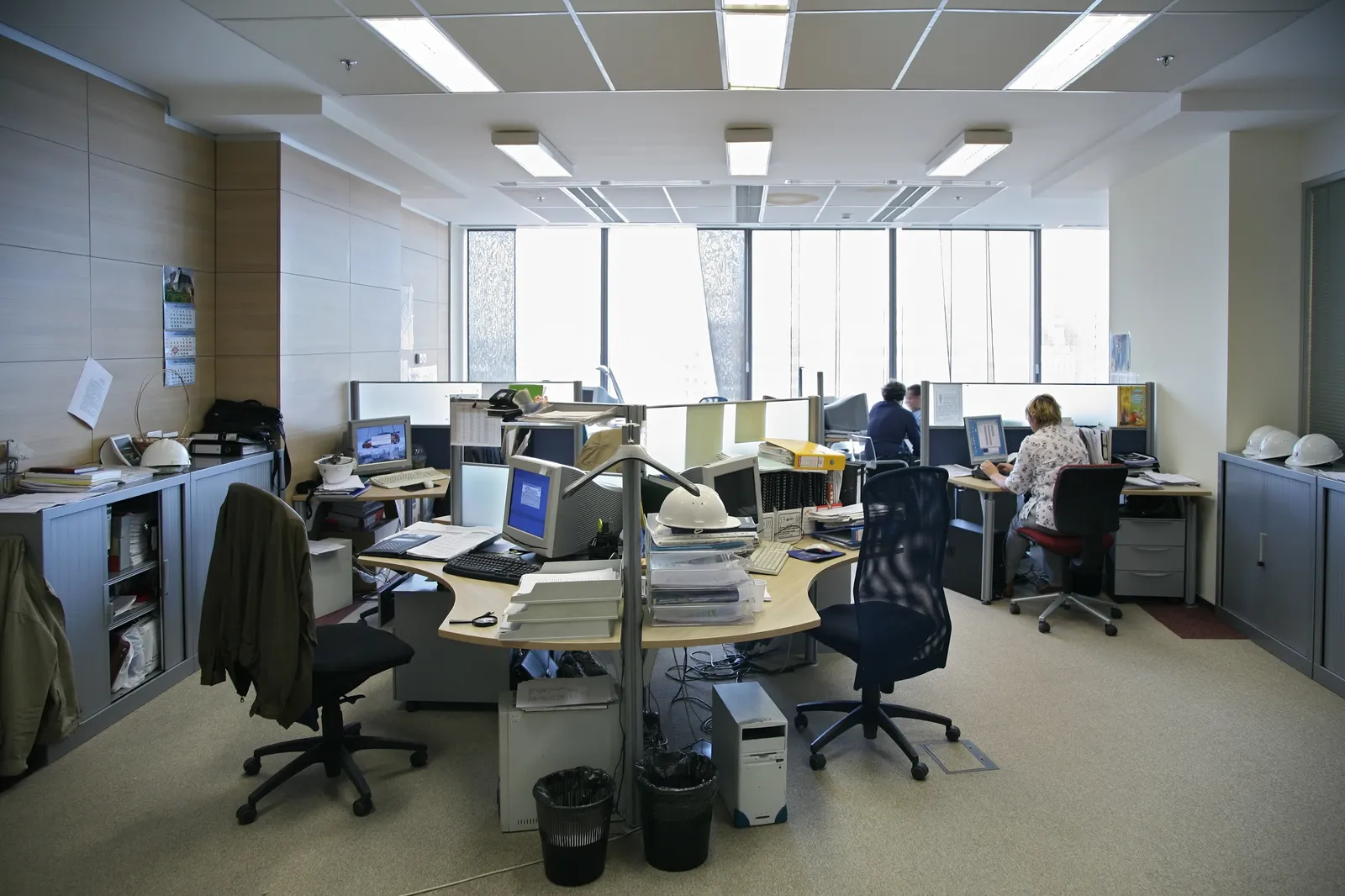
2000s: Globalisation and the Wi-Fi Workplace
The early 2000s brought the dot-com boom, followed by economic turbulence after 2001. Broadband and Wi-Fi liberated laptops from cables, while social media (LinkedIn in 2003, Facebook in 2004) blurred the lines between professional and personal networks.
Corporate campuses grew more connected and international. Open-plan layouts became the default, with collaboration zones and breakout areas signalling a softer, more transparent culture.
Broadband and laptops encouraged more fluid layouts bringing with them banks of shared desks with hot-desking zones and glazed meeting rooms. Glass and steel dominated, paired with minimalist white walls and blue-grey carpet tiles. Plasma screens displayed rolling news; frosted glass gave a semi-private look that felt both modern and corporate.
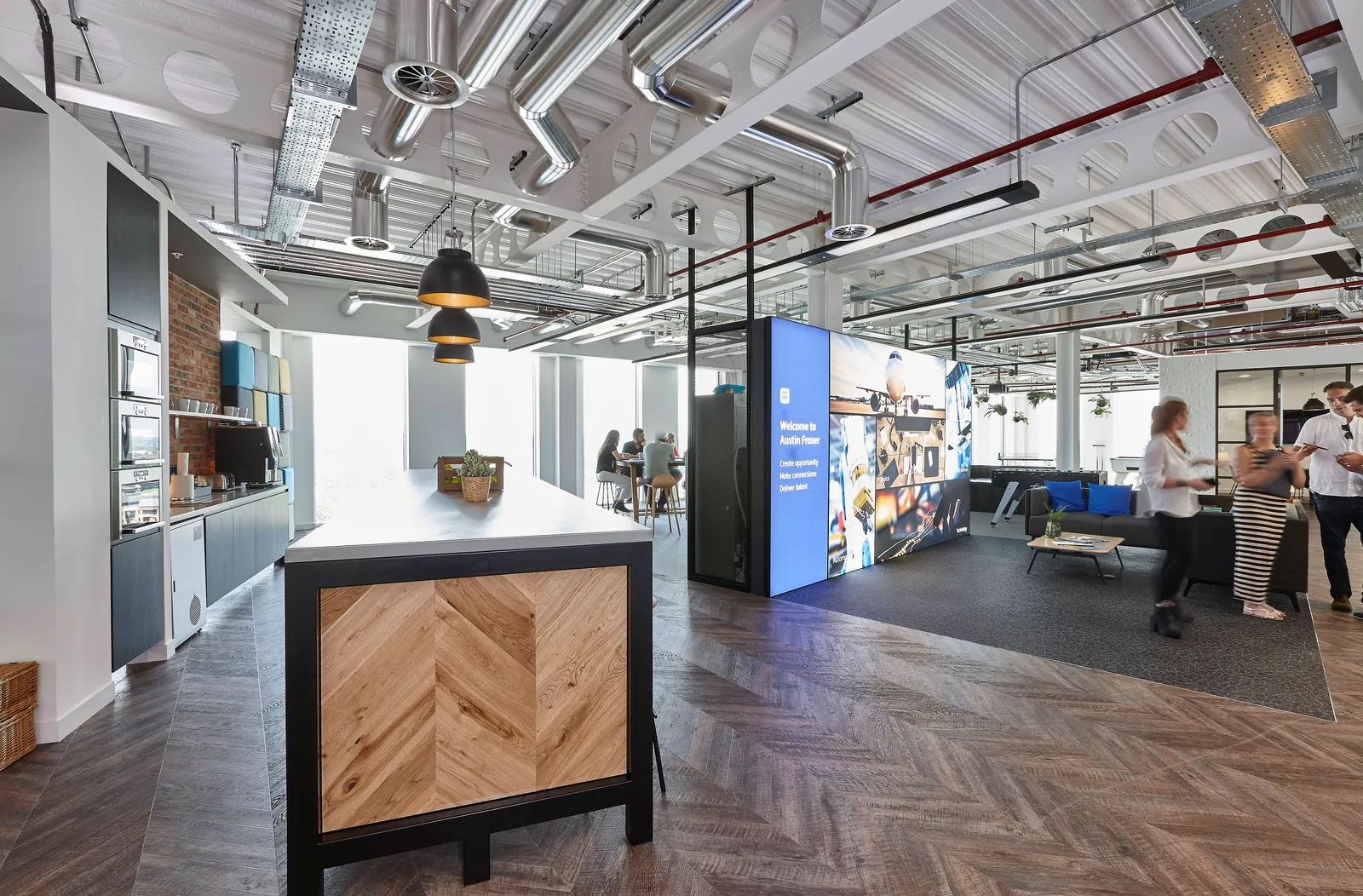
2010s: The Google Effect, Coworking, and Wellbeing
As smartphones and cloud computing matured, work was no longer tied to a single desk. WeWork popularised coworking and lifestyle-driven offices: greenery, soft furnishings, and coffee bars.
“Wellbeing became business-critical,” says Gary Chandler, CEO of Fourfront Group, Area’s parent company. “People expected light, nature, comfort, spaces for focus and connection.”
Sustainability and inclusivity gained momentum, with design increasingly shaped by neurodiversity, flexible working and employee experience.
Offices became lifestyle spaces: exposed brick and timber, living walls of greenery, and pendant lighting over communal tables. Soft furnishings, beanbags, and acoustic pods sat alongside open kitchen areas with barista coffee machines. Branding and art installations turned workplaces into expressions of culture and creativity.
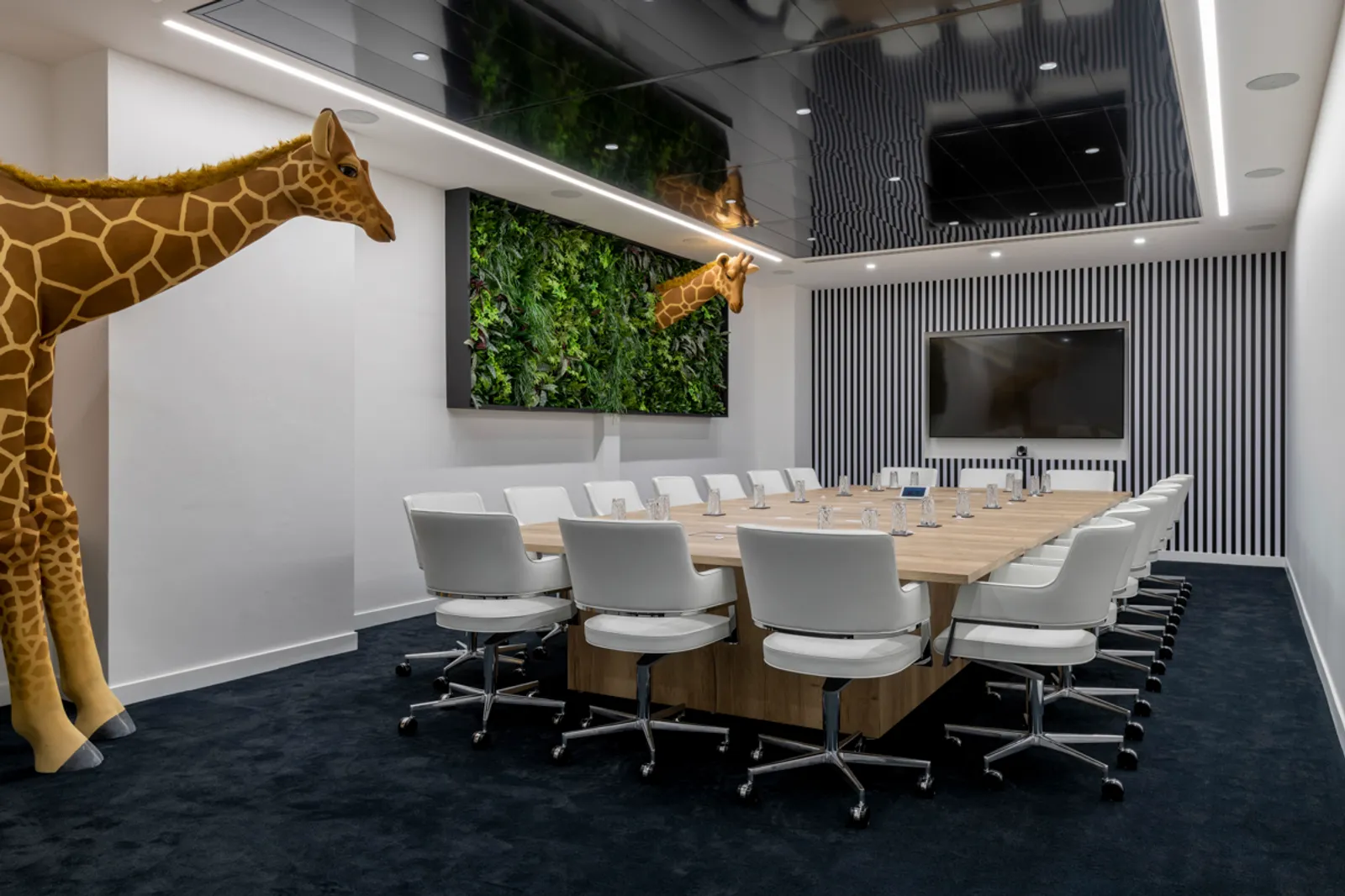
2020s: Hybrid and the Home-from-Home Aesthetic
The pandemic of 2020 transformed working life overnight. Kitchen tables became workstations; Zoom replaced boardrooms.
When offices reopened, they needed to earn their place. “The office stopped being somewhere you had to be,” Chandler reflects. “It became somewhere you wanted to be, a place to connect with people and culture.”
Today’s workplaces feature soft seating, phone booths, and residential warmth: muted colours, natural textures and biophilia. Leases are shorter, footprints more flexible, and culture, not just square footage, defines value.
Post-pandemic interiors favour softer, residential finishes: lounge seating, textured rugs and biophilic features such as planters and natural light wells. Phone booths and soundproof pods provide privacy, while flexible modular furniture supports hybrid work. Colour palettes lean to warm neutrals and natural woods, creating a calm, welcoming hub for collaboration.
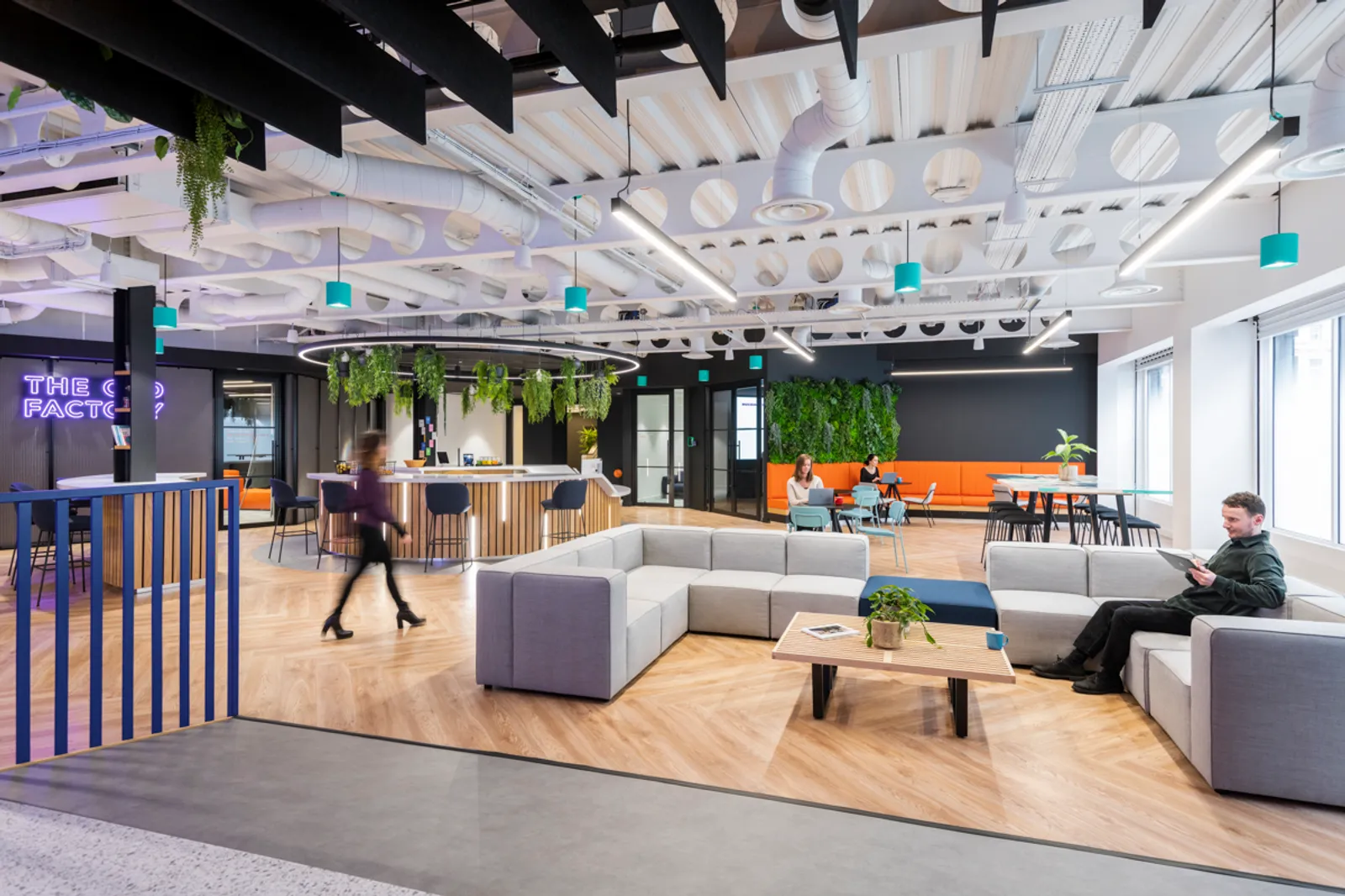
Looking Ahead to the Offices of 2050
Offices will become ever more powerful visual expressions of brand identity. Spaces that don’t just house a company but embody its purpose, values and culture in every texture, colour and detail.
By 2050, the workplace is likely to function as a true human–technology ecosystem, a constantly adapting space where cutting-edge systems enhance rather than dominate the experience of work. Traditional rows of fixed desks will feel almost quaint; instead, the office will be organised around collaboration, creativity, and community.
AI will operate like an invisible concierge, constantly adjusting light, temperature, and acoustics to maintain optimum wellbeing and peak performance. Biohacking technology, subtle sensors that track air quality, circadian lighting that mirrors natural daylight, and adaptive soundscapes - will help combat fatigue and sharpen focus. Data will quietly inform every detail, from the arrangement of furniture to the rhythm of airflow.
Visually, the 2050 office will feel more like a living landscape than a corporate building. Picture indoor forests and sculptural water features, walls that double as vertical gardens, and ceilings that filter daylight through patterned canopies of greenery. Floors will shift in texture, from warm timber walkways to soft moss-like surfaces, creating a natural journey through zones of concentration and collaboration. Meeting areas will resemble immersive theatres, with holographic projection and spatial audio allowing colleagues across continents to feel as if they’re sharing the same room.
Quiet zones will be cocooned in acoustic fabrics, while social spaces will be designed for serendipity: curved seating clusters, micro-cafés, and flexible lounges that can transform from morning brainstorming to evening events. Materials will be largely regenerative; think carbon-positive composites, translucent bio-glass, and 3D-printed structures grown from mycelium or recycled waste, proving that sustainability and beauty can coexist.
As Gary Chandler notes, “The future office isn’t about technology for its own sake, it’s about technology that enables more human work: creativity, collaboration, and connection. When AI takes on the routine, the workplace becomes the arena for everything only people can do.”
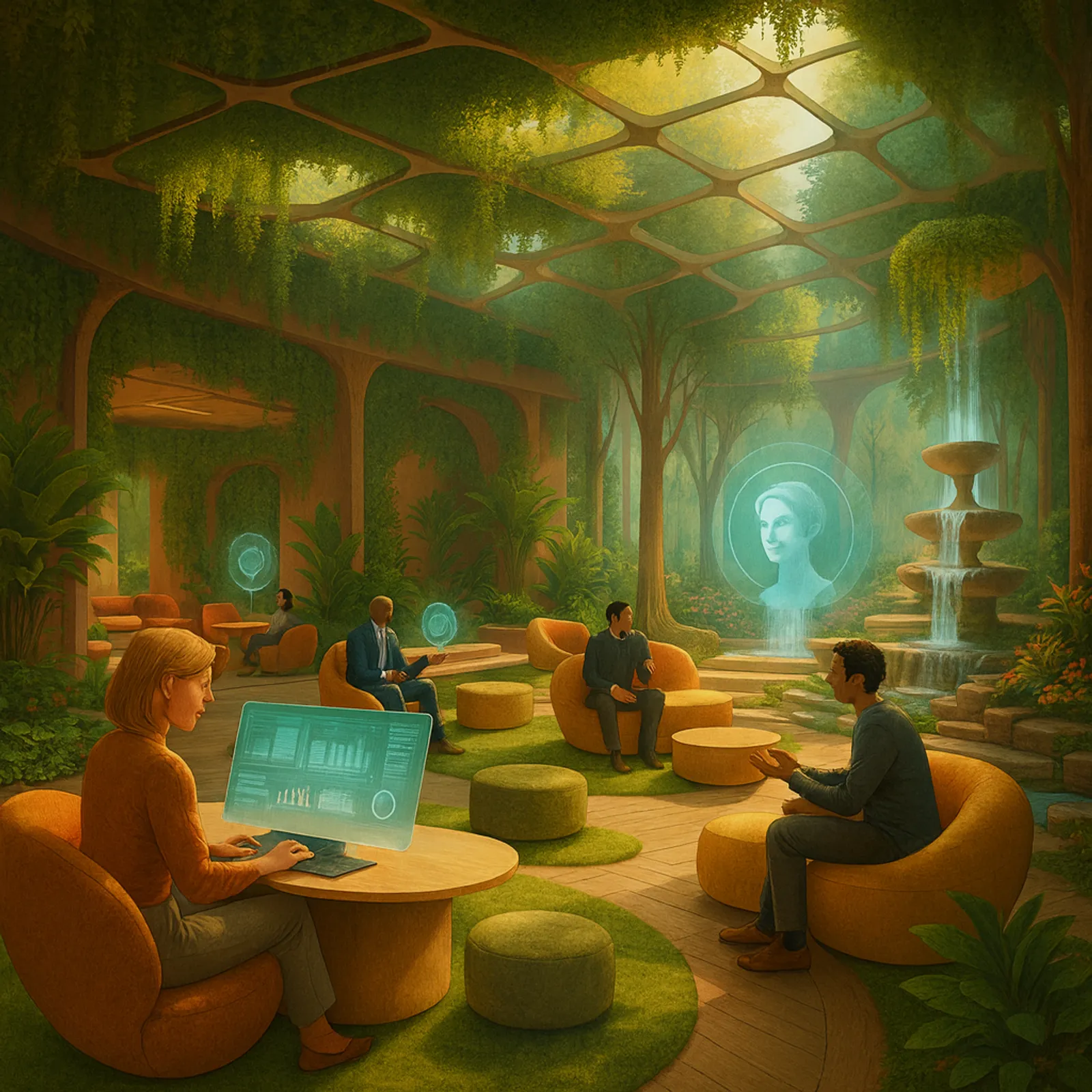
Lessons from a quarter century of design
Area’s 25 years of experience highlight some enduring truths. Choice always trumps uniformity: open-plan layouts alone cannot meet every need, so people require a blend of spaces for collaboration and for quiet focus. Inclusivity is no longer a bonus but a baseline, with design expected to serve neurodiverse teams and accommodate a variety of workstyles. Wellbeing has become a decisive factor in retaining talent; comfort, culture, and opportunities for genuine connection now sit at the heart of a successful workspace. And ultimately, the office acts as a living expression of company culture, a visible statement of an organisation’s values and an influential tool for attracting and inspiring people.

